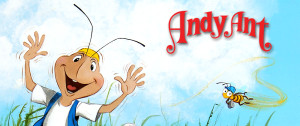
Story Writing Hints
By
Gerald D. O’Nan
Author of the
Adventures of Andy Ant Books
(Note: I will try to give you hints and ideas about writing stories using the 8 books in The Adventures of Andy Ant as examples. Having a set of the Andy Ant books available will help you understand the context better, but it isn’t necessary if you have a good imagination.)
Editing – How Can You Make it Better
You can always make your story better! Little changes can make a big difference in your story. While the beginning and the end of your story may require the majority of the editing, don’t neglect what is said in that middle part.
As part of your editing process, examine your audience – the people who you want to read your story. Make changes to suit your audience or even consider changing your audience.
Start your editing process by reading your story out loud. As noted in an earlier hint, reading your story out loud helps you know if the story flows well or is too choppy. It also helps you check the flow of the dialog. Does the dialog paint the correct picture?
Reread the opening paragraphs/page and the ending. Reread the opening paragraphs/page and the ending. Reread the opening paragraphs/page and the ending. These words are repeated for a reason. They are the most important parts of your story – the most important parts of your painting. Do your words paint your best picture?
After you have read it out loud, rewritten it, tweaked every part of the story, and read the story to a friend. Watch your friend’s facial expressions while you read the story. Does your friend show any emotion? After you have finished the story, I suggest you not ask, “How did you like it?” The better question to ask is, “How can I make it better?”
Another tool I like to use in editing the story is to stop reading to your friend or group just before the climax of the story. When I am speaking to students about the writing process, I often use The Swimming Hole Disaster as an example. I will read a portion of the story and stop the story just as Andy is about to be washed down the storm sewer. If the story is exciting and the students are engaged, they will eagerly want to hear the rest of the story. If they don’t respond with some level of excitement or enthusiasm, you might have additional editing to do.
Ask someone who is a seasoned reader to read your story. Always ask the critical question, “How can I make it better?”
Let your story “cool” for several days. Reread your story out loud and see if you still believe the flow is good and the pictures you are painting with your words accurately describe your story. There are always changes you can or should make. Even now when I read The Adventures of Andy Ant I find things I would like to change.
Copyright © 2023 by Gerald D. O’Nan All Rights Reserved. No part of this document may be used or reproduced by any means, graphic, electronic, or mechanical, including photocopying, recording, taping, or by any information storage retrieval system without the expressed written permission of the author except in the case of brief quotations embodied in critical articles and reviews.



